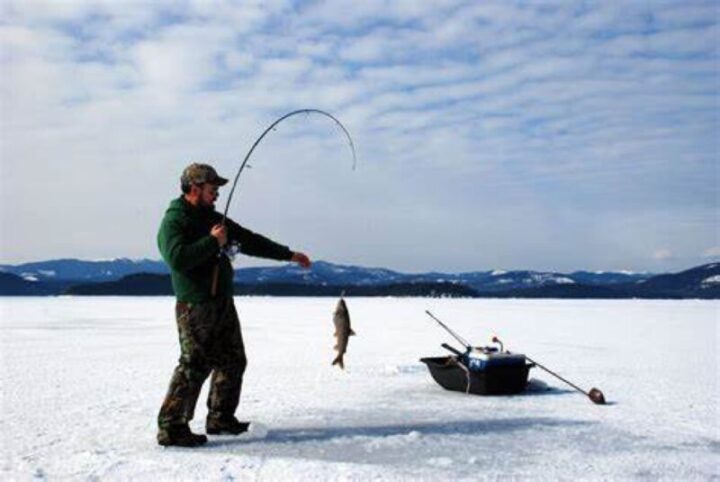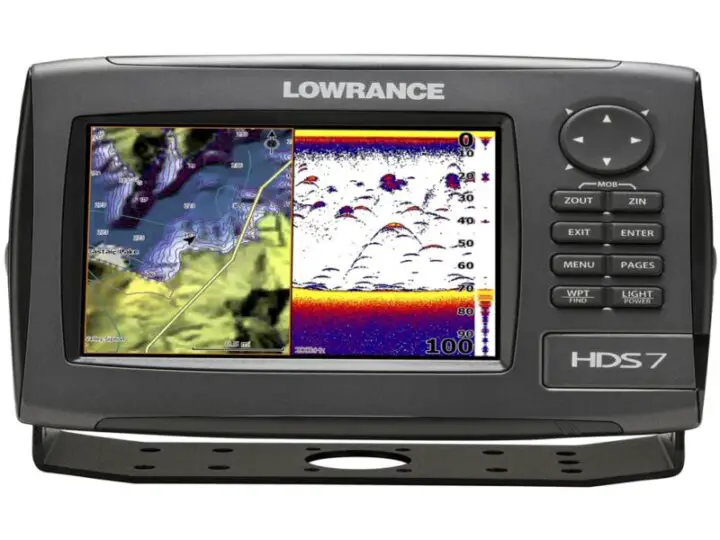Sports & Outdoors
Best Ice Fishing Fish Finders Buying Guide

If you’re looking to seek out fish and make the most out of your time spent on the ice, then you’ve come to the right place.
From being able to spot your prey and scout the bottom to tracking your location via GPS and getting a better understanding of your geographic surroundings, choosing the best ice fishing fish finder can easily help you do it all.
In the following article, we’re going to take a look at the most important features to consider when shopping for ice fishing fish finders.
Check out the ProFishingGearReviews ice fishing fish finder reviews or keep reading to learn more about ice fishing fish finders.
Budget
Fish finders can easily range in price from as low as less than a hundred to as high as several hundred dollars.
So, if you’re looking for a fish finder to take out on the ice with you, the first thing you’re going to want to consider is your budget.
As you’ll learn deeper into this guide, there are plenty of features that can be found on a fish finder. However, the general rule of thumb is that the more features there are, the higher in price the model will cost.
Therefore, before shopping, it’s important to determine your budget and think about which features are absolutely necessary for you.
If you’re looking for a basic model that only notifies you when there are fish nearby, then you should be safe to set your budget relatively low. But if you’re hoping to find a fish finder that comes complete with all the bells and whistles available, then be ready to spend a good chunk of money to find what you’re looking for.
Features
As mentioned, most fish finders come with a range of features. Below, we’ll discuss these features to help you determine if you really need each one.
Sonar
Sonar is how a fish finder is able to scan the waters around it and tell you when there are fish or other objects present.
Sonar works by sending ultrasonic sound waves out into the water. These sound waves then travel until they hit an object (hopefully, a fish) and are bounced back where they are picked up by the fish finder’s antenna.
These signals are then interpreted by the unit’s onboard computer and displayed on its screen.
Although there are many different levels of accuracy and quality when it comes to sonar devices, we should note that sonar isn’t really an optional feature. Without it, you wouldn’t be able to find any fish, period!
Learn more about Sonar navigation here.
Keypad
Most fish finders come with a basic keypad that allows you to toggle between views and screens. More basic fish finder models will have a typical keypad that includes an up, down, left, and right buttons, as well as a “select” or “Ok” button.

Touchscreen
Just like our phones, many modern fish finders have a built-in touchscreen that allow for easier control over your unit.
Many of these even have multi-gesture capabilities, which allow you to swipe, tap, touch, and pinch your screen with more ease than using a traditional keypad.
Imaging and Mapping
Basic fish finders only use sonar to display simple graphics on the screen notifying you that there are fish nearby.
On the other hand, higher-quality fish finders with have improved graphics imaging and mapping features, which allow you to get a better understanding of the terrain at the bottom of the lake, as well as letting you know when there are fish present.
Some fish finder models will even allow you to adjust the screen’s focus, which gives the user a much clearer idea of what they’re looking at under the water.
GPS Navigation
Most modern fish finders will have built-in GPS navigation tools that will allow you to closely track your routes and mark spots when you know the fish are biting.
You can usually plug your fish finder into your computer and upload maps. That way, once you get out on the ice on your favorite lake, you’ll simply need to power up your fish finder and you’ll instantly be able to look at an accurate map of your surroundings.
Furthermore, GPS capability can be a lifesaver if you’re fishing on a lake that you’ve never been on before.
Fishing in the winter can often be disorienting since everything is covered in snow, but if you have a GPS system built into your fish finder, you can rest assured that you’ll never get lost, no matter the weather.
Networking
One of the more advanced features that we’re starting to see on fish finders are their ability to connect and network with other devices such as a trolling motor.
By connecting your fish finder in this way, you can easily locate areas where the fish are biting, and lock onto them by programming your GPS to hold you in the same position.
Moreover, network capabilities allow you to share and send your stored waypoints, routes, and tracks with other fishermen who use the same model.
Choosing the Best Ice Fishing Fish Finders
When shopping for a new fish finder, whether for summer time fishing or ice fishing, there are many factors that you need to consider before making your purchase.
The most important factor to think about is how much money you’re willing to spend.
You can easily go out and spend a thousand dollars on a top-of-the-line fish finder, but that might not be necessary if you don’t actually need or aren’t planning on using all of them.
Regardless, many of the features we’ve talked about above are becoming fairly common on today’s fish finders and things such as GPS navigation can be extremely helpful, especially if you often go ice finding on lakes that you’ve never visited before.
In the end, just make sure to think about what factors are truly important to you and make sure to shop around a bit before making your purchase.
After that, get out on the ice, make good use of your brand-new fish finder, and above all else, have fun!
